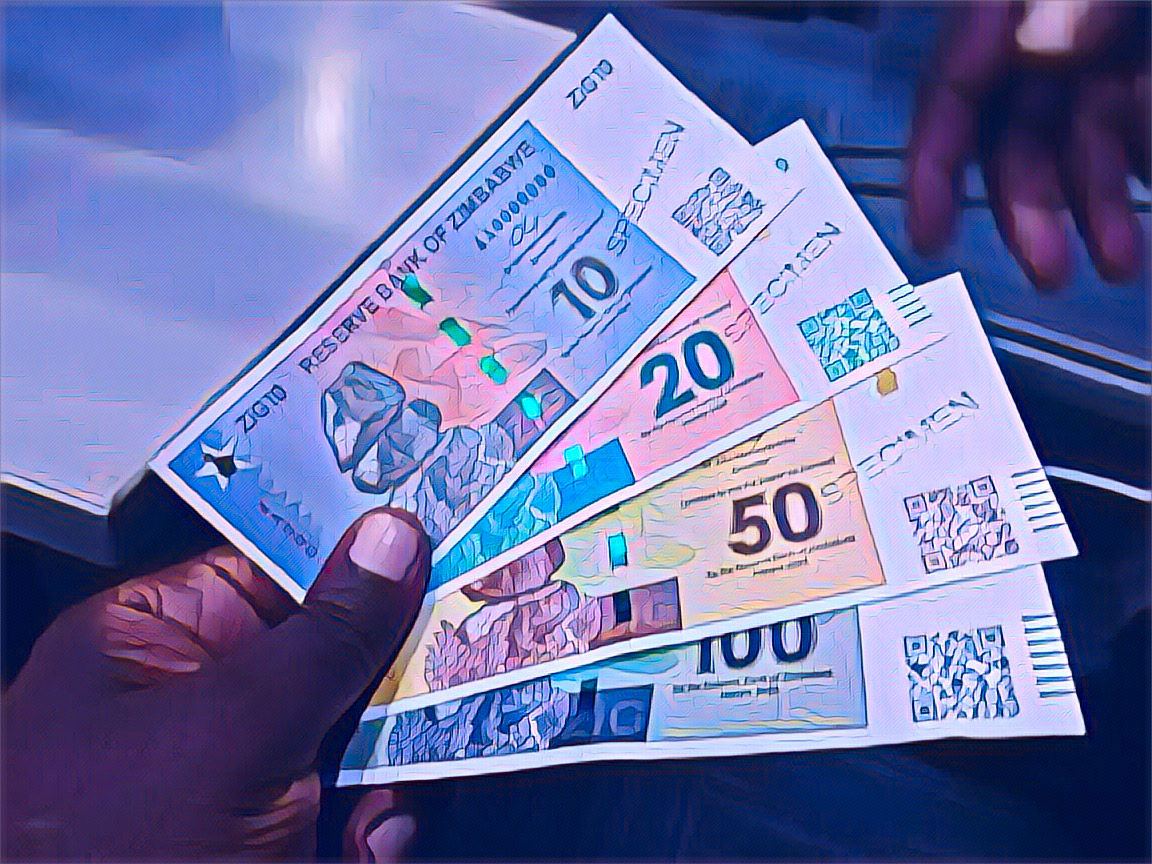KEY POINTS
- Zimbabwe lost $3.15 billion from currency handling between 2020-2023.
- The ZiG currency, launched in April 2023, has quickly lost value.
- High inflation and currency distortions are crippling the economy
Zimbabwe’s management of the exchange rate is costing it billions. Research showed that currency distortions were the primary source of Zimbabwe’s Treasury’s $3.15 billion loss between 2020 and 2023.
This deficit demonstrates the serious issues brought on by having an unstable local currency and deals a serious blow to the nation’s already unstable economy.
President Emmerson Mnangagwa’s administration introduced the Zimbabwe Gold (ZiG) currency in April 2023, replacing the Zimbabwe dollar.
Lowering inflation and achieving economic stability was the aim. Reserves of foreign money and gold supported the ZiG. However, the currency’s value has significantly decreased after six months. ZiG30 is currently trading around $1 on the black market, down from the initial set
Why is Zimbabwe losing money?
Overvaluation of the ZiG currency has resulted in financial losses, while changes in the exchange rate caused a significant reduction in tax income and severely hindered industrial expansion.
Carren Pindiriri, one of the principal researchers, explained the extent of the losses, saying that “currency distortions caused a total loss of $3.15 billion.” These results imply that Zimbabwe’s economic potential is being harmed by both inflation and the informal sector.
Zimbabwe’s inflation reached over 700% by the end of 2023. The official exchange rate fell by 95% between December 2023 and April 2024, sending it into freefall. This created a widening gap between the official and parallel markets, putting further strain on Zimbabwe’s economy.
The result was a growing divide between the official and black markets, which further strained the economy.
Economy in crisis
ZiG’s implementation, in the opinion of President Mnangagwa’s advisor, economist Eddie Cross, has not resolved Zimbabwe’s fundamental currency issues. “We are losing the fight, and the value has already dropped by 80%,” he said.
Cross cautioned that, like its predecessors, the ZiG is doomed unless significant adjustments are made. “Essential imports into Zimbabwe’s economy cost $150 million a week, but banks are having difficulty raising even $20 million,” he said.
Cross emphasized that if Zimbabwe takes no immediate action, it may face food shortages, business closures, and empty store shelves.
Power outages aggravate the problem, as the nation can barely supply half of its electricity demand. This reduces productivity and weakens the economy even more.
Solution and intervention
The World Bank’s findings show that high inflation, fluctuating exchange rates, and weak government spending controls have severely hindered Zimbabwe’s economic growth.
The Zimbabwe National Chamber of Commerce’s CEO, Christopher Mugaga, demanded that the government step in right away to stabilize the currency.
According to Mugaga, “the ZiG has depreciated far more steeply than expected.” “The government has to make sure the money appreciates and is used for all services, including payments to the public sector.”
Vince Musewe and other economists have highlighted how the currency issue is driving up the already exorbitant costs associated with conducting business in Zimbabwe, with variables like taxation, fluctuating fuel prices, and unstable electricity supplies.
However, the volatility of the Zimbabwe Gold currency (ZiG) has worsened the situation. Unfortunately, the typical consumer who has a low income is the one who is harmed.
Can Zimbabwe de-dollarise
Some experts in Zimbabwe had linked the ZiG’s struggles with the country’s continuous efforts to de-dollarize.
According to Prosper Chitambara, a member of the Monetary Policy Committee of the Reserve Bank of Zimbabwe, “establishing the proper conditions is essential to the success of this transformation,” he said.
Zimbabwe replaced its weak indigenous currency with the US dollar in 2009 as its primary medium of exchange and aims to have the ZiG as its sole currency by 2030. However, experience indicates that nations that dollarize have difficulty completely de-dollarising.
According to the International Monetary Fund (IMF), only four out of eighty-five countries were able to successfully de-dollarize between 1980 and 2001. These four countries are Mexico, Pakistan, Poland, and Israel.


